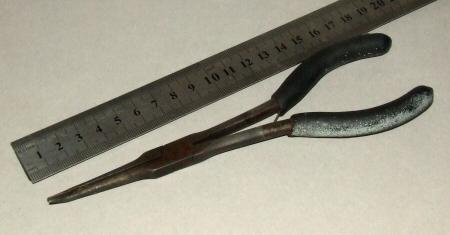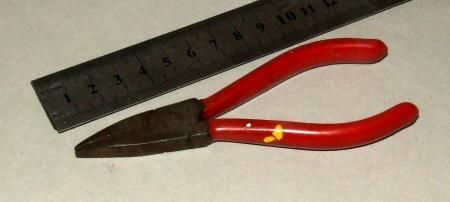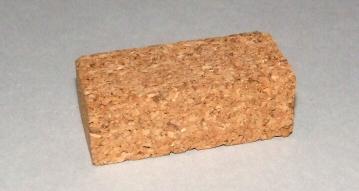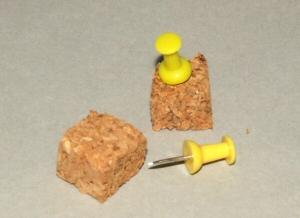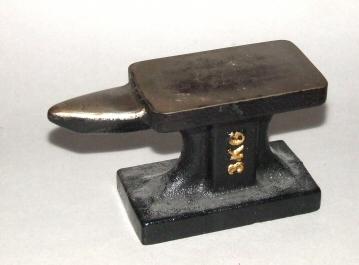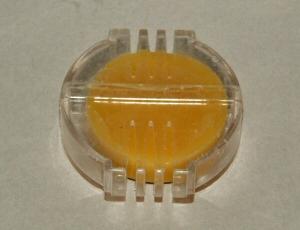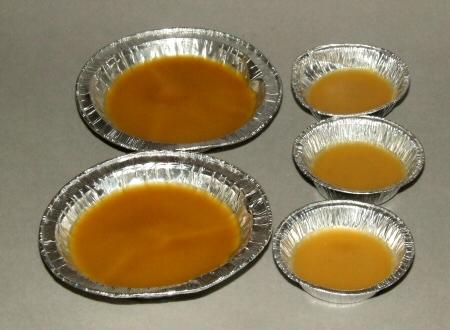-
Posts
5,904 -
Joined
Content Type
Profiles
Forums
Events
Blogs
Gallery
Everything posted by fredk
-
I don't think so, but I don't know. I seem to remember I was watching and wasting time, a load of those 'hacks' and this came up in my side-bar listing. Also, Istr, it was a Eastern European, with subtitles that weren't very good. Oh, and I think it wasn't called anything to do with lace, some terrible translation
-
I've seen this made with two razor blades. A thick block of wood for a base. Mounted to it at an angle, on each side, and slightly spaced apart blocks of wood to which the razor blades are screwed. On the base block of wood in front of the blade was a another long block of wood with a 1mm x 3mm groove in it to keep the the lace down. This was so the block could be changed if another size of lace was used. In operation the base was clamped to a work-table and the lace was pulled though. The razor blades cut off a bevel on both edges. I think I saw this on youtube for I seem the remember the worker turning the lace over and cutting bevels again so he ended up with <>
-
To answer the OP; try a shampoo meant for shaggy dogs. Apply lightly with warm water and a sponge. Comb out using a curry comb, sponge and paper towel dry and finally hang out where a good breeze will finish the drying
- 3 replies
-
- wooly woolies
- chaps
-
(and 6 more)
Tagged with:
-
Simple answer; yes
-
Yup, looks nice
-
I find searching off-site easier and quicker. I use google; put what you are looking for followed by leatherworker.net and it brings up a number of listings I just did a search that way and among it brought up this
-
Who would have thunk it? That you could do this; https://www.bbc.co.uk/news/articles/cl7lnzj9ze1o
-
Leave them out on the grass and let the ants have a feast
-
Buy a pattern off etsy or a Tandy pattern. Its all worked out for you
-
Leave the wood handles on , the lemon juice wont harm the wood and might loosen any dirt on them
-
Try letting them soak in lemon juice for a few hours
-
Its possibly a black lacquer and normal paint stripper wont work on it. You could try a soaking in lacquer (cellulose) thinners, otherwise its a case of sanding it off with a very rough grade of grit. When replacing it I would use Hammerite Paint. As Hammerite is fairly thick you could just paint it over the old paint and the patches wont show. Hammerite comes in many colours so you can also choose one you like
-

Pink?
fredk replied to toxo's topic in Dyes, Antiques, Stains, Glues, Waxes, Finishes and Conditioners.
yes -

Pink?
fredk replied to toxo's topic in Dyes, Antiques, Stains, Glues, Waxes, Finishes and Conditioners.
I found Fiebings Oxblood came up pink -
It seems we favour pliers I use these very long ones for where I can't get my fingers. i.e. inside dice cups, these pliers are used to pull the needle through. I have two other pairs but they just not as long but very nearly Its not often I can't pull a needle through but when I can't I use these pliers. They are also used when I'm putting flat lace on the lacing needle, they are used to press the lace down onto the prongs without damaging the prongs A piece of cork used when I'm making a hole with an awl. Its used to back up and support the leather so the awl goes into it, not my fingers (!) Small pieces of cork with mapping pins. I use these to hold parts together whilst I sew them up I wouldn't be without my anvil. Used as its supposed to be for hammering and shaping things, eg setting ready-rivets but its also a good weight to put on pieces glued up
-
I think; The general public doesn't know all this. The newspapers reported, correctly or not, of peoples card details being stolen, the public read this and believed it. The fitting of RFID blocking material is like a comfort blanket to the public There was a similar 'scare' when we used the paper and roller system. Where the card was put in a hand operated machine, a paper receipt put on top. A roller was run over them and the card details were impressed into them, then we signed the receipt. The 'scare' was the shop was making two copies and the second was put thru with the first for payment; you were paying twice.
-
I've found that even mass produced knives that are supposedly exactly the same can have small differences which affect their fit in a sheath
-
I made a batch of Bee's Wax, Paraffin Wax and Rosin. Inspired by this discussion started in 2011 and woken up last December ; As usual I made too much I have 3 lots of five T-light size pieces to give away. They were made this size so they would fit in this thread waxer (not included) I also have 3 bigger sized ones and 2 even bigger. The really big ones are in a small pie dish, the smaller are in bun dishes This stuff is seriously sticky. I had to destroy the T-light holders to get the wax blocks out If anyone wants a share of these PM me Its all Free, including UK postage
-
I finally got making a batch of this



